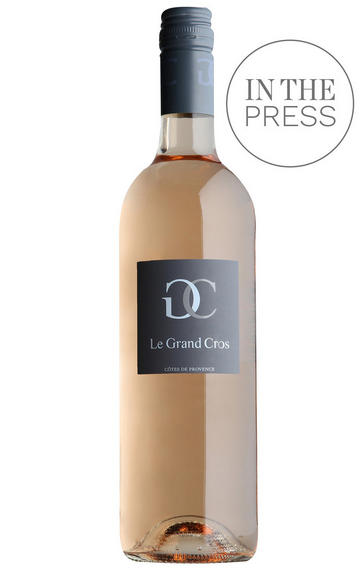
2019 Domaine du Grand Cros, Le Grand Cros Rosé, Provence
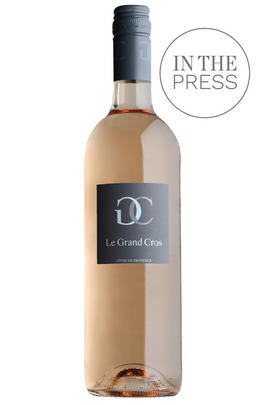
Critics reviews
About this WINE
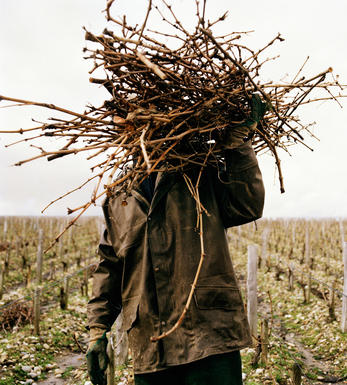
Domaine du Grand Cros
Le Grand Cros is first a story about a couple, Jane and Hugh Faulkner, who fell in love with this pretty corner of Provence in 1989, with vineyards planted over the foothills of the Massif des Maures, surrounded by pine and olive trees and dry stone terraces. Slowly they restored the property then in 1999, their son Julian took over the running of the domaine. He carried out major restructuring of the vineyards and upgrade of the winery with the goal to get more out of the potential terroir and surrounding natural environment.
Julian has strived to blend science and art. However science does not have answers to everything and its at that point that his instinct as a winemaker takes over. He makes quality wines, that reflect very much the domaine's style, spirit and personality.
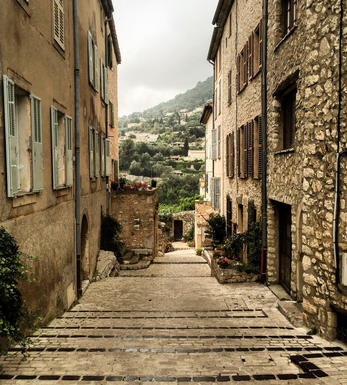
Côtes de Provence
Reputedly the source of Louis XIV’s favourite wines, Côtes de Provence lies in the south-east of Provence and overlaps with the Var department. Coteaux Varois is sandwiched between two parts of the Côtes de Provence appellation; the enclaves of Cassis, Bandol and Palette are also nestled between pockets of land to the south and east of Côtes de Provence.
Eighty percent of the appellation’s production is dry rosé wine, distinguished by an inimitable pale-pink colour and elegant flavours. Cinsault and Grenache dominate in the region’s rosés, augmented with the occasional dash of the local, intensely aromatic Tibouren. The AOC regulations stipulate that at least 20 percent of a rosé blend must come from wine made using the saignée (literally, ‘bleeding’) method.
The remaining 20 percent of the region’s production is dedicated 15 percent to red and five percent to white wines. Following the Phylloxera epidemic known as the Great French Wine Blight in the late 1800s, much of Côtes de Provence was replanted with the high-yielding Carignan vine.
Since the late 1990s, a host of new, small, dynamic estates has started to focus on a new-wave style of red wines, characterised by full-fruit ripeness, concentration, and soft tannins and using ameliorateur varieties such as Syrah and Cabernet Sauvignon, which are gradually replacing the once ubiquitous Carignan.
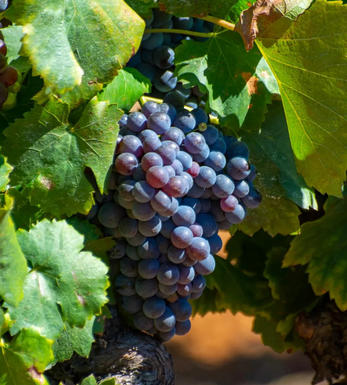
Cinsault
Cinsault (pronounced "sin-so") is a red grape variety known for its versatility and contributions to various wine regions worldwide. It has a rich history, primarily in the Languedoc region of southern France, but it has spread to many other wine-producing areas due to its adaptability to different climates.
Cinsault grapes are medium-sized with thin skins, typically dark blue to black in colour. The vines are hardy and drought-resistant grapevine, making them suitable for warm and arid climates. They are particularly well-suited to Mediterranean regions and thrive in areas with hot summers.
While Cinsault is mainly used in red wine production, it is also sometimes used in rosé wines, adding light and fruity character. It is often blended with other grape varieties to enhance the wine profile.
The variety tends to exhibit a range of flavours, including red berries, cherries, and sometimes a hint of spices. When used in rosé wines, it can bring out more floral and watermelon notes.
Tannins are typically on the lower side, which can make them more approachable and enjoyable in their youth. The variety is often used in blends to soften and round out more tannic grape varieties.
Cinsault has been a key component in traditional blends in southern France, such as in Châteauneuf-du-Pape wines. Over time, it has gained popularity in other wine regions as winemakers recognize its potential for producing high-quality wines.


Buying options
Add to wishlist
Description
wine at a glance
Delivery and quality guarantee